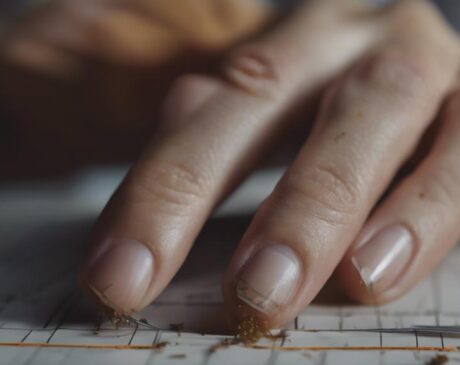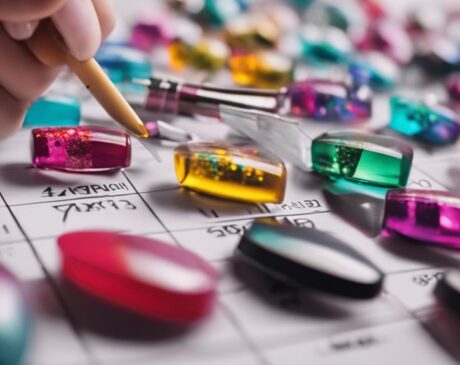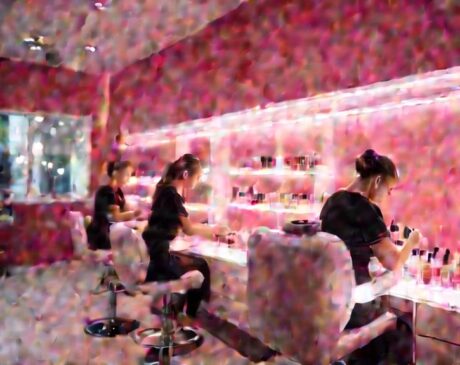Why Is My Gel Polish Still Sticky After Curing?
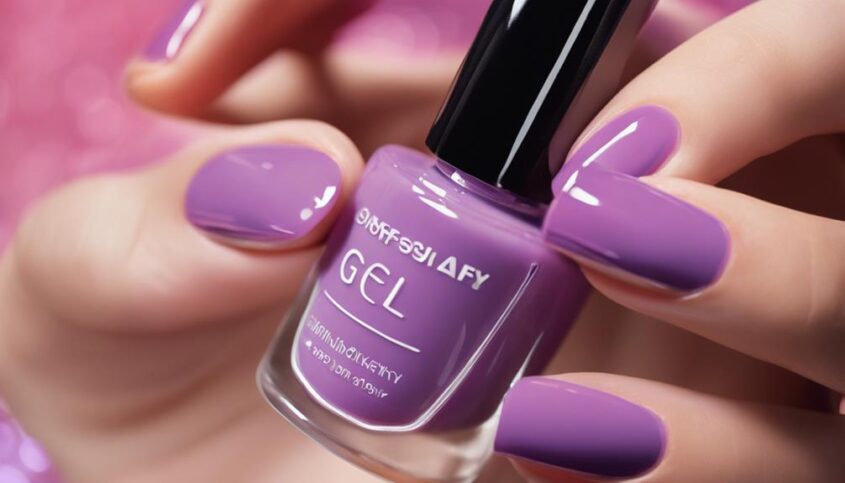
Gel polish can stay sticky after curing due to factors like inadequate curing time and incorrect lamps. Low-quality polish, overapplication, incomplete nail prep, residue, unclean lamps, and environmental factors can also affect curing. Follow recommended curing times and use compatible lamps for optimal results. Quality polish and precise application techniques are essential for a smooth finish. Proper nail prep, residue removal, and lamp maintenance contribute to effective curing. Consider environmental conditions for successful gel polish application. Understanding these factors can help achieve a flawless, non-sticky result when using gel polish.
Key Takeaways
- Inadequate curing time leads to sticky gel polish.
- Proper curing lamp compatibility is crucial.
- Gel polish quality impacts stickiness.
- Overapplication of gel polish causes stickiness.
- Nail preparation and cleanliness affect adhesion.
Inadequate Curing Time
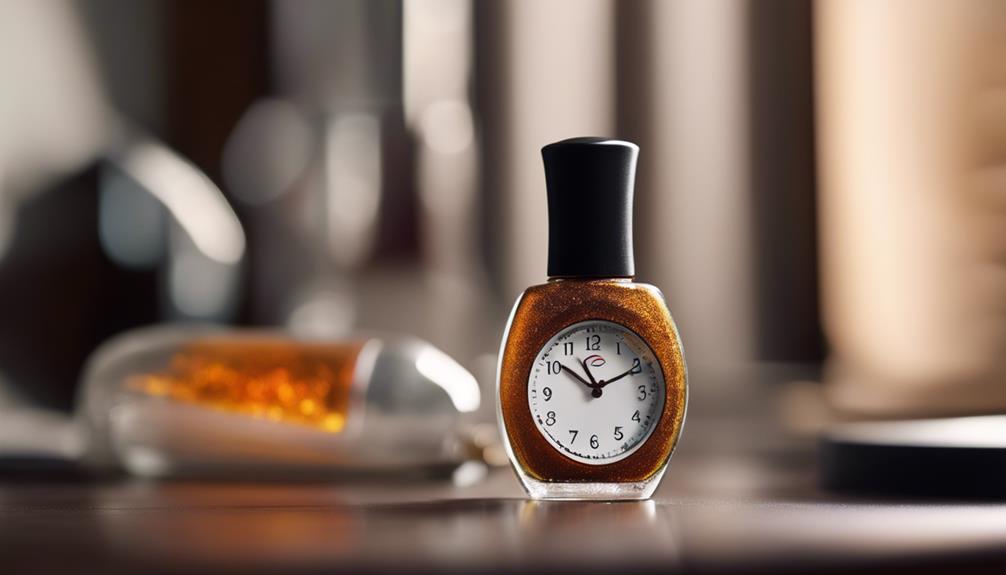
Inadequate curing time may result in gel polish remaining sticky after the curing process. Proper curing is essential for achieving a durable and flawless gel manicure. When gel polish is not fully cured, it can lead to tacky or sticky layers that are prone to smudging and lifting. To ensure optimal results, it is crucial to adhere to the recommended curing times specified by the gel polish manufacturer.
Innovations in gel polish technology have introduced faster curing options, such as LED lamps that significantly reduce curing times compared to traditional UV lamps. These advancements allow for quicker and more efficient curing processes, saving both time and energy. However, it is important to note that while faster curing times can be beneficial, it is still necessary to follow the manufacturer's guidelines to prevent issues like sticky residue.
Incorrect Curing Lamp
Utilizing the wrong type of curing lamp can adversely impact the effectiveness of the gel polish curing process. When selecting a curing lamp for gel polish application, it is essential to ensure that it is compatible with the specific gel polish being used. Different gel polishes require varying wavelengths and intensities of light to cure properly. Using an incorrect curing lamp can result in the gel polish not curing fully, leading to a sticky residue on the nails even after the recommended curing time.
Innovations in curing lamp technology have introduced options such as LED and UV/LED hybrid lamps, providing efficient curing processes for a wide range of gel polishes. LED lamps offer quick curing times and energy efficiency, making them popular choices among nail technicians and enthusiasts. UV/LED hybrid lamps combine the benefits of UV and LED technology, ensuring thorough curing without excessive heat exposure. Investing in a quality curing lamp that is suitable for the gel polish being used is crucial to achieving long-lasting and flawless gel manicures.
Poor Quality Gel Polish
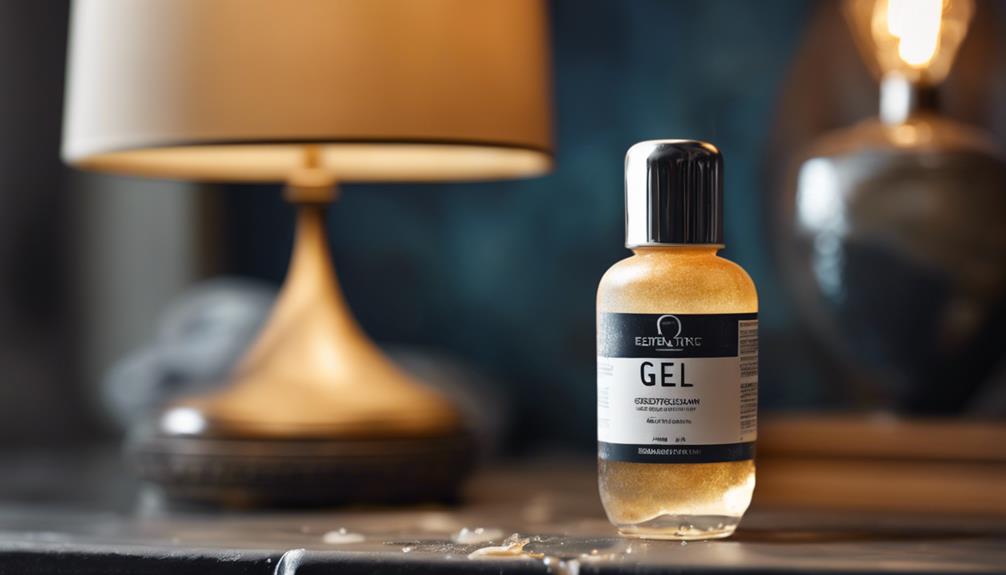
When dealing with poor quality gel polish, understanding the ingredients used is crucial to pinpointing the issue. Alongside this, mastering proper curing techniques can make a significant difference in the final outcome. Implementing quality control measures ensures consistency and reliability in the gel polish application process.
Gel Polish Ingredients
Poor quality gel polishes often contain subpar ingredients that can lead to issues like stickiness after curing. When selecting gel polishes, it's crucial to consider the ingredients used in the formulation. Here are three common subpar ingredients found in poor quality gel polishes:
- Low-quality pigments that can affect the color vibrancy and longevity of the polish.
- Cheap fillers that may cause the polish to shrink or crack during curing.
- Inferior bonding agents that result in poor adhesion to the nail, leading to premature chipping or peeling.
Proper Curing Techniques
To ensure optimal results with poor quality gel polish, precise curing techniques play a crucial role in achieving a durable and flawless finish. When working with subpar gel polish, it is essential to apply thin, even layers to promote thorough curing. Utilizing the recommended curing times specified by the manufacturer is paramount for proper polymerization of the gel polish. Moreover, ensuring that the UV or LED lamp is functioning correctly and has the appropriate wattage is vital for effective curing. Properly positioning the nails under the lamp to guarantee uniform exposure to the light can also enhance curing outcomes. By adhering to these meticulous curing practices, even with lower quality gel polish, one can achieve satisfactory and long-lasting results.
Quality Control Measures
A critical aspect to consider when dealing with substandard gel polish is implementing stringent quality control measures to address any deficiencies in the product.
- Utilize Advanced Spectrophotometry: Employ cutting-edge technology to ensure color consistency and vibrancy in gel polish formulations.
- Implement Robust Batch Testing Procedures: Conduct thorough testing at various stages of production to catch any irregularities early on.
- Enhance Formulation Monitoring: Utilize real-time monitoring systems to track ingredient ratios and ensure product stability over time.
Overapplication of Gel Polish
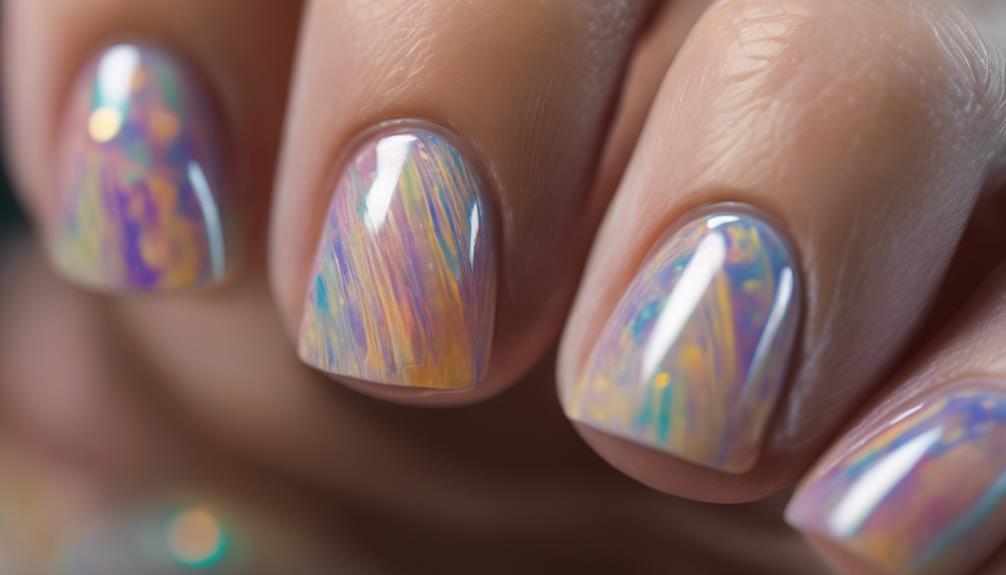
Overapplication of gel polish can lead to sticky results after curing, commonly caused by applying excess gel or thick layers of polish. When too much product is used, the UV or LED light may struggle to fully cure the layers, resulting in a tacky finish that can be frustrating for both the nail technician and the client. Ensuring proper application techniques and using the right amount of gel polish is essential to achieve a smooth, long-lasting manicure.
Excess Gel Application
Excessive application of gel polish can lead to a sticky finish even after curing, affecting the overall quality of the manicure. When too much gel polish is applied, the UV light may not penetrate through the layers effectively, causing incomplete curing. This results in a tacky residue on the surface that needs to be wiped off, leaving the manicure feeling sticky and vulnerable. To avoid this issue, consider the following tips:
- Apply thin, even coats of gel polish to allow proper curing.
- Ensure each layer is cured for the recommended time under the UV/LED lamp.
- Avoid overloading the brush with gel polish to maintain control over the application process.
Thick Layers Applied
When applying gel polish, it is essential to maintain a balance in the thickness of each layer to ensure proper curing and prevent stickiness after the manicure. Overapplication of gel polish can lead to thick layers that do not cure evenly, causing the sticky residue to remain. Thick layers act as a barrier, preventing the UV/LED light from penetrating adequately, which results in the gel not drying completely. To avoid this issue, apply thin, even coats of gel polish, ensuring each layer is cured correctly before applying the next. By adopting this technique, you can achieve perfectly cured gel polish manicures without any sticky residue, providing clients with long-lasting and flawless nail finishes.
Incomplete Nail Preparation
Proper nail preparation is essential for achieving optimal adhesion and longevity of gel polish applications. Incomplete nail preparation can lead to sticky gel polish even after curing. To ensure a flawless gel polish application, consider the following:
- Cuticle Care: Trim and push back cuticles before starting the application process. Excess cuticle on the nail plate can interfere with the gel polish adhering properly.
- Nail Buffing: Gently buff the surface of the nails to remove any shine or oils. This step helps the gel polish adhere better to the natural nail.
- Dehydrating the Nail Plate: Use a nail dehydrator or rubbing alcohol to thoroughly cleanse the nail plate. This step removes any remaining oils or residue, promoting better adhesion of the gel polish.
Residue on the Nails
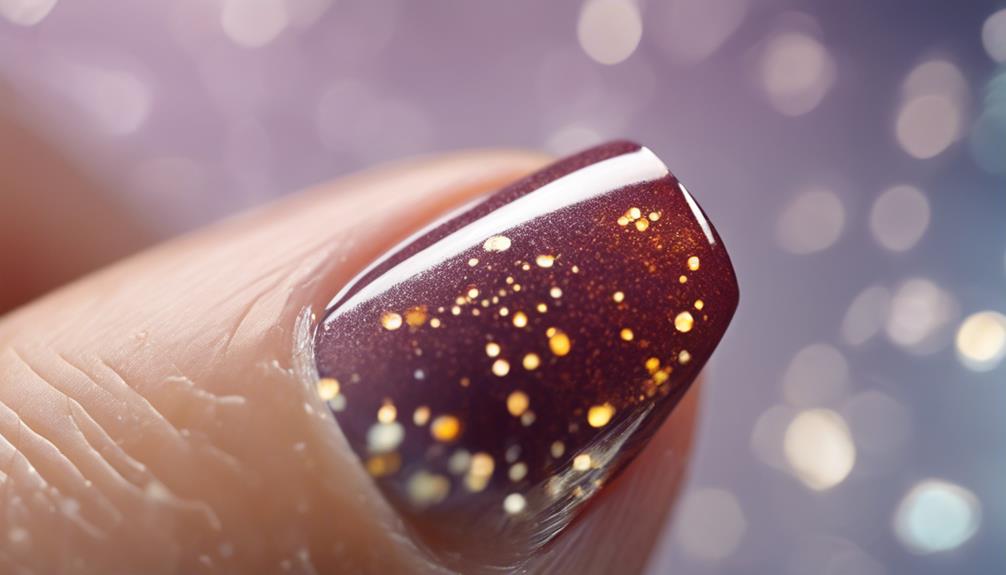
Residue left on the nails can significantly impact the adhesion and curing process of gel polish applications. Any residue, such as oils, lotions, or dust, left on the nail surface can create a barrier between the gel polish and the natural nail, leading to poor adhesion and ultimately causing the polish to remain sticky after curing. To ensure optimal adhesion and curing, it is essential to thoroughly cleanse the nails before applying gel polish. This can be achieved by using a nail cleanser or rubbing alcohol to remove any residue and create a clean, oil-free surface for the gel polish to adhere to effectively.
Moreover, residue on the nails can also interfere with the proper curing of the gel polish. If there is any residue present on the nail surface during the curing process, it can prevent the gel polish from curing fully, leaving it tacky or sticky. Therefore, ensuring the nails are completely clean and residue-free before applying and curing gel polish is crucial for achieving a flawless and long-lasting manicure.
Unclean or Old Lamp
An unclean or old lamp used for curing gel polish can impede the proper polymerization process, leading to a sticky finish that fails to set correctly. To ensure optimal curing results, it is crucial to maintain a clean and efficient curing lamp. Here are three key considerations to address regarding unclean or old lamps:
- Bulb Efficiency: Over time, the bulbs in curing lamps may lose their effectiveness, resulting in inadequate curing. Regularly check the bulbs and replace them as needed to maintain optimal curing conditions.
- Cleanliness: Dust, residue, or product buildup on the lamp's interior or bulbs can obstruct the light emitted during the curing process, leading to improper polymerization. Regularly clean the lamp according to the manufacturer's instructions to prevent interference with the curing process.
- Wavelength Compatibility: Different gel polishes require specific wavelengths of light for proper curing. An old lamp may no longer emit the correct wavelength, leading to incomplete curing and a sticky finish. Ensure your lamp's wavelength output matches the requirements of the gel polish being used for efficient curing.
Environmental Factors
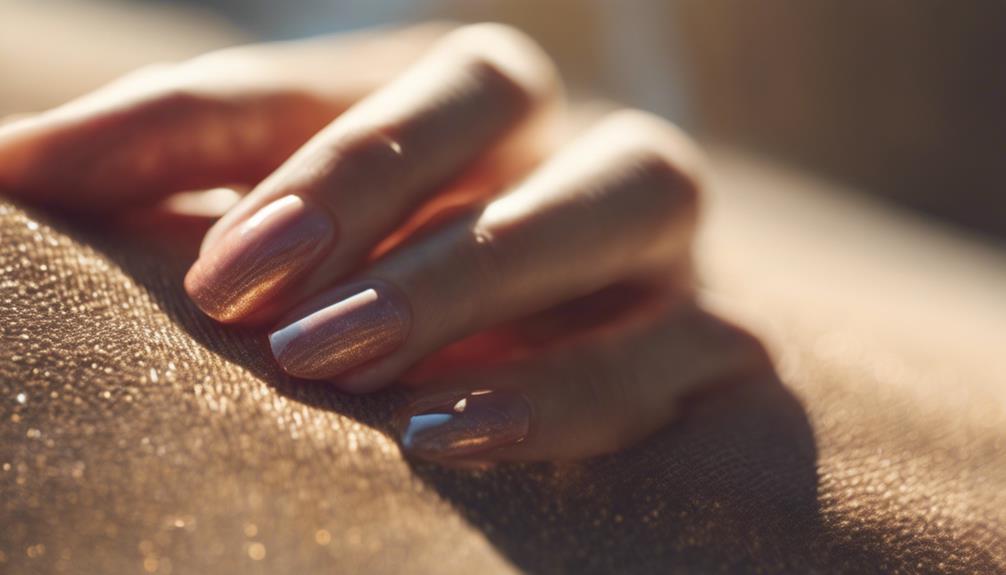
Environmental conditions play a significant role in the curing process of gel polish, influencing the final outcome of the manicure. Factors such as temperature, humidity, and airflow can impact how well the gel polish cures. Ideally, gel polish should be cured in a controlled environment with a consistent temperature range of 70-77°F (21-25°C) and humidity levels below 50%.
High humidity can prevent the gel polish from curing properly, leading to a sticky or tacky layer on the nails. To combat this, using a dehumidifier in the curing room can help create a more optimal environment for the gel polish to cure effectively. Additionally, direct airflow from fans or air conditioning should be avoided during the curing process, as it can cause uneven curing and potentially leave the polish sticky.
Frequently Asked Questions
Can Using a Different Brand of Gel Polish Affect the Stickiness After Curing?
Using a different brand of gel polish can indeed impact the stickiness post-curing. Variations in formula composition, curing times, and compatibility with base and top coats may result in different outcomes. Experimenting cautiously can help find optimal combinations for desired results.
How Can I Tell if My Gel Polish Is Expired and Causing It to Remain Sticky After Curing?
Determining if gel polish has expired and contributed to stickiness post-curing involves examining the product's consistency, color changes, and any separation. Ensure proper storage away from light and heat to prolong its shelf life.
Are There Any Specific Environmental Factors That Can Cause Gel Polish to Remain Sticky After Curing?
Various environmental factors, like humidity levels, improper curing techniques, or using subpar products, can all contribute to gel polish remaining sticky after curing. Understanding these factors is crucial for achieving flawless gel manicures.
Is It Possible for Residue From Previous Manicures to Affect the Curing Process of a New Gel Polish Application?
Residue from previous manicures can indeed interfere with the curing process of a new gel polish application. Ensuring thorough removal of any leftover residue prior to application is crucial for achieving optimal results and a long-lasting, flawless finish.
Can Using a Different Base or Top Coat Contribute to Gel Polish Remaining Sticky After Curing?
Using a different base or top coat can indeed impact gel polish curing. Compatibility is vital; mismatched formulas might lead to stickiness post-curing. Ensure products are designed to work together for optimal results and lasting wear.

